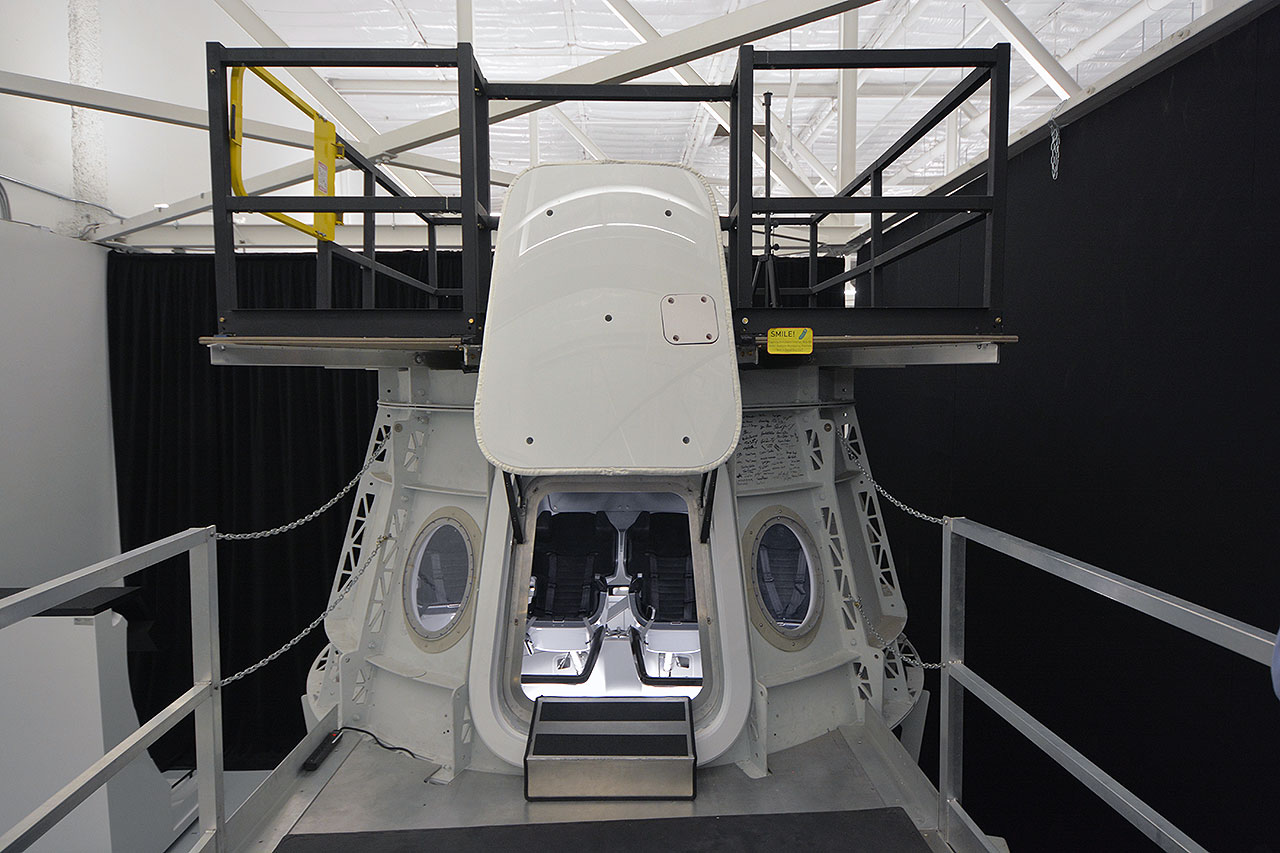SpaceX private Ax-1 mission's science includes self-assembling robots and light-powered air filters
Axiom Space's first mission plans a hefty science agenda during eight days on the International Space Station.

Houston company Axiom Space has a huge science haul planned for its debut mission, including robots and filters that could assist with future space exploration at the moon or Mars.
Axiom plans to launch Ax-1, the first all-private crewed mission to the International Space Station, on April 8 aboard a SpaceX Crew Dragon. Four people, including three paying customers, will spend 10 days in space, including eight aboard the orbiting complex, but officials have emphasized this will not be a space tourism jaunt.
"This crew has been really dedicated to research," Christian Maender, Axiom's director of in-space manufacturing and research, said during a livestreamed press conference held on Feb. 28. Axiom-1's science includes 25 research experiments developed for microgravity and up to a dozen pre- and post-flight experiments, he noted.
"This collection of life science and tech demos," Maender added, "is a very deep breadth of research that's going to inform everything from human health considerations both in space and on the ground, and the knowledge, infrastructures and design for future homes away from Earth."
Photos: The first space tourists
Ax-1 will be commanded by Axiom employee and former NASA astronaut Michael López-Alegría, who will be joined by three paying customers: real estate entrepreneur Larry Connor, Canadian investment CEO Mark Pathy, and Israeli investor Eytan Stibbe, each of whom reportedly paid $55 million for a spot.
"A lot of different experiments in each of these projects have come to bear because of the interest of this crew," Maender said. "Early in the mission design process, they brought to us a portfolio of work. They said, 'We really want to do some of these things in orbit.' It's been a pleasure to work with them, and with NASA and the National Lab, to really bring these things to fruition for the crew."
Get the Space.com Newsletter
Breaking space news, the latest updates on rocket launches, skywatching events and more!
Ax-1 will span studies in human research, technology demonstrations, Earth observation and science (life and physical), the company said in a November 2021 press release.
The crew collectively plans more than 100 hours of time in space to work on the experiments, which works out to more than one-tenth of their overall hours in orbit (960, assuming about 240 hours from 10 days in space for each of the four people.)

Connor will work with the Mayo Clinic and the Cleveland Clinic, building on research he has funded at those institutions for most of the last 10 years. For Mayo, Connor will examine senescent cells (cells that have stopped dividing) and their relation to heart health. At the Cleveland Clinic, he plans pre- and post-mission MRIs to see how spaceflight affects spinal and brain tissue.
"This is a ground-level attempt to learn what kinds of effects space travel will have on civilians across a spectrum of ages," Thomas E. Mroz, Cleveland Clinic's director of the center for spine health and director of spine research, said in the Axiom statement. "There's so much to learn. How long can people stay in space? Or what do they need based on their health?"

Pathy will work on behalf of The Montreal Children's Hospital, the Group of Canadian Research Universities and The Royal Canadian Geographical Society (along with various universities and startups) on several research projects.
Pathy will test a two-way "holoportation" system allowing users to communicate remotely using two 3D-projections as a hologram. He will perform research for the children's hospital to study chronic pain and sleep disturbances, along with more research projects for other institutions, an example being visual changes associated with spaceflight. Pathy will also do Earth-observation activities to better understand the impacts of global warming and urbanization on our planet.
"The unique perspectives Mark will be contributing from space will help build a lasting legacy of learning tied to the protection and conservation of our Canadian ecosystem — long after his mission is complete," John Geiger, CEO of the Royal Canadian Geographical Society, said in the Axiom statement.
Stibbe, a friend of Israeli astronaut Ilan Ramon who died aboard the Columbia space shuttle in 2003, plans to work on behalf of the Ramon Foundation and in collaboration with the Israel Space Agency in the Israeli Ministry of Innovation, Science, and Technology.
"The experiments are innovative and trailblazing, arising from diverse disciplines – astrophysics, agriculture, optics, communication, biology, healthcare, neurology, and ophthalmology — and were chosen based on their potential impact on research and innovative approach," Inbal Kreiss, chair of the scientific and technological committee and head of innovation of systems missiles and space group at Israel Aerospace Industries, said in the statement.
"They are expected to lead to technological, scientific, and medical breakthroughs that will impact the quality of human life on Earth and the future of humanity's long-term missions beyond Earth," Kreiss added.
On March 17, Axiom released brief details about other experiments the crew plans to perform on the space station, particularly related to technology.
TESSERAE (Tessellated Electromagnetic Space Structures for the Exploration of Reconfigurable, Adaptive Environments): This project will test technology that forms swarms of self-assembling robots that can be used for a range of constructions, including extra space station modules. The work is in collaboration with the Massachusetts Institute of Technology Media Lab Space Exploration Initiative, along with the Aurelia Institute.
Modeling Tumor Organoids in Low-Earth Orbit: Using human cancer stem cells and a cancer stem cell reporter system, this project will evaluate early cancer-induced organ impacts thanks to the faster aging that occurs in microgravity. Collaborators include the University of California, San Diego and the Sanford Consortium for Regenerative Medicine.
Japan Manned Space Systems Corporation (JAMSS) Photocatalyst: An air purification device called a photocatalyst will be used for a technical demonstration to evaluate its performance. The device will use light to convert air gasses into water and carbon dioxide. Collaborators include JAMSS, the Tokyo University of Science and the Tokyo University of Agriculture and Technology.
Translational Research Institute for Space Health (TRISH): The consortium will collect a range of data about the passengers, including conducting physical and cognitive tests and measuring balance and vision. TRISH plans to create a research database from the information to learn about impacts on human health, especially for long-duration missions to the moon and possibly, Mars. The consortium includes the Baylor College of Medicine, the California Institute of Technology, and the Massachusetts Institute of Technology.
Follow Elizabeth Howell on Twitter @howellspace. Follow us on Twitter @Spacedotcom or Facebook.
Join our Space Forums to keep talking space on the latest missions, night sky and more! And if you have a news tip, correction or comment, let us know at: community@space.com.

Elizabeth Howell (she/her), Ph.D., was a staff writer in the spaceflight channel between 2022 and 2024 specializing in Canadian space news. She was contributing writer for Space.com for 10 years from 2012 to 2024. Elizabeth's reporting includes multiple exclusives with the White House, leading world coverage about a lost-and-found space tomato on the International Space Station, witnessing five human spaceflight launches on two continents, flying parabolic, working inside a spacesuit, and participating in a simulated Mars mission. Her latest book, "Why Am I Taller?" (ECW Press, 2022) is co-written with astronaut Dave Williams.









